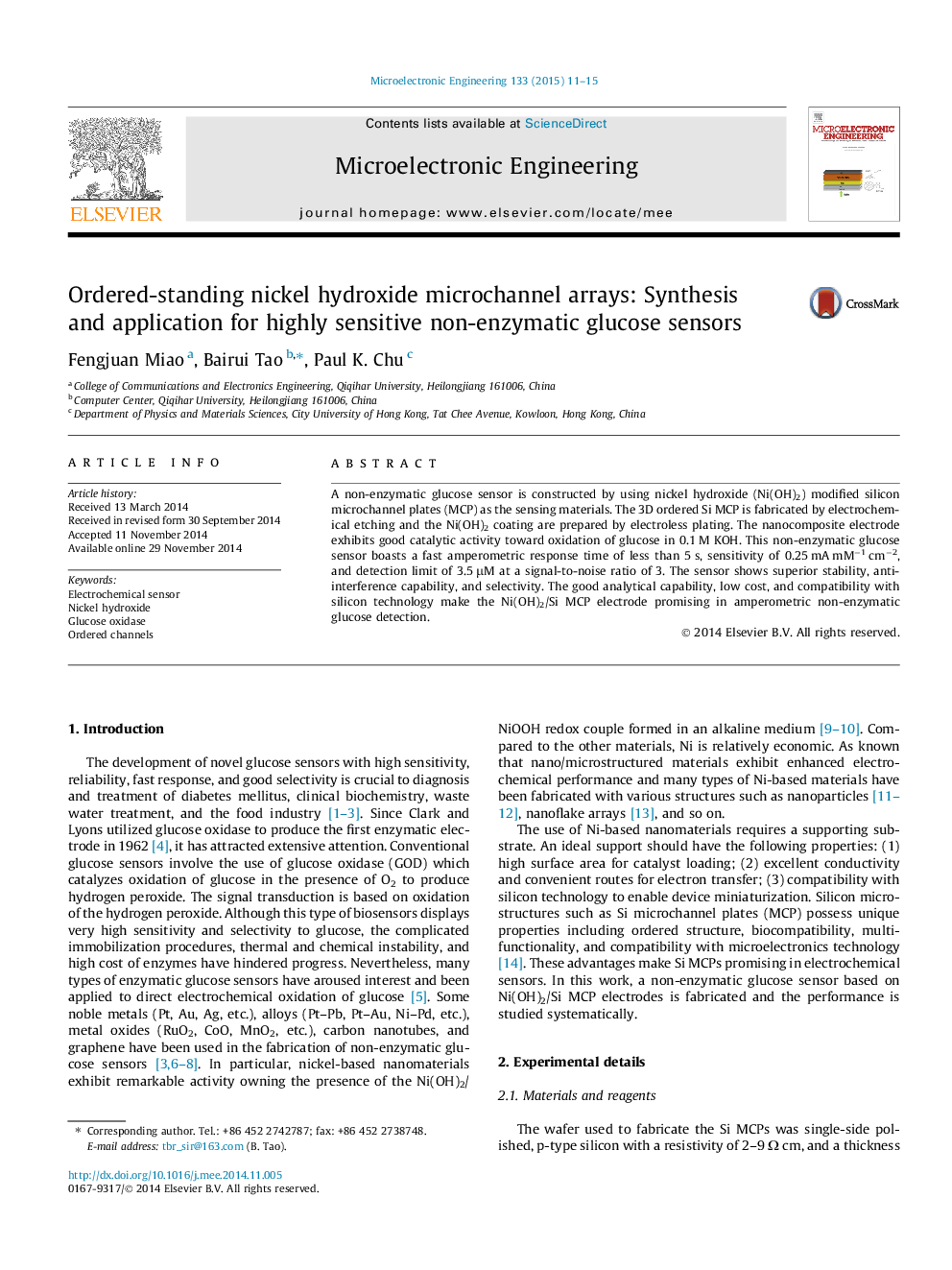| کد مقاله | کد نشریه | سال انتشار | مقاله انگلیسی | نسخه تمام متن |
|---|---|---|---|---|
| 542295 | 1450348 | 2015 | 5 صفحه PDF | دانلود رایگان |
• This research may provide a meaning way in integratable sensors.
• Si MCP itself is an excellent support for electrocatalyst.
• The porous structure itself with high surface to volume ratio endows higher mass Ni(OH)2 nanopatricles.
• The ordered channel and mesoporous structure permits liquid electrolyte flow easily.
A non-enzymatic glucose sensor is constructed by using nickel hydroxide (Ni(OH)2) modified silicon microchannel plates (MCP) as the sensing materials. The 3D ordered Si MCP is fabricated by electrochemical etching and the Ni(OH)2 coating are prepared by electroless plating. The nanocomposite electrode exhibits good catalytic activity toward oxidation of glucose in 0.1 M KOH. This non-enzymatic glucose sensor boasts a fast amperometric response time of less than 5 s, sensitivity of 0.25 mA mM−1 cm−2, and detection limit of 3.5 μM at a signal-to-noise ratio of 3. The sensor shows superior stability, anti-interference capability, and selectivity. The good analytical capability, low cost, and compatibility with silicon technology make the Ni(OH)2/Si MCP electrode promising in amperometric non-enzymatic glucose detection.
The figure (a) depicts the top-view and cross-sectional SEM images of the electrochemically etched Si MCP with a large aspect ratio. The surface has a regular square morphology with all the channels aligned orderly. The etched microchannel depth reaches approximately 200 μm and the square holes are about 5 μm in length. The use of a structure with such a large vertical surface area to load the sensing materials is expected to increase the sensitivity of the sensor while maintaining the original small substrate footprint. After electroless nickel plating, nickel nano-grains several to hundreds of nanometers in size exist on the inner walls as the current collector layer of the sensor, as shown in (b). The surface of the nickel layer is not smooth and so it can provide more surface area to form nickel hydroxide. The morphology of the Ni(OH)2 film on the sidewall surface is depicted in (c). The morphology of the Ni(OH)2 film with the nano-flake morphology on the channels is not the same possibly due to the asymmetry of ion concentration deep inside the microchannels. The nano-flakes are intertwined to produce a nano-porous Ni(OH)2 film with a large surface area and short diffusion distance and excellent electrochemical performance is expected.Figure optionsDownload as PowerPoint slide
Journal: Microelectronic Engineering - Volume 133, 5 February 2015, Pages 11–15
